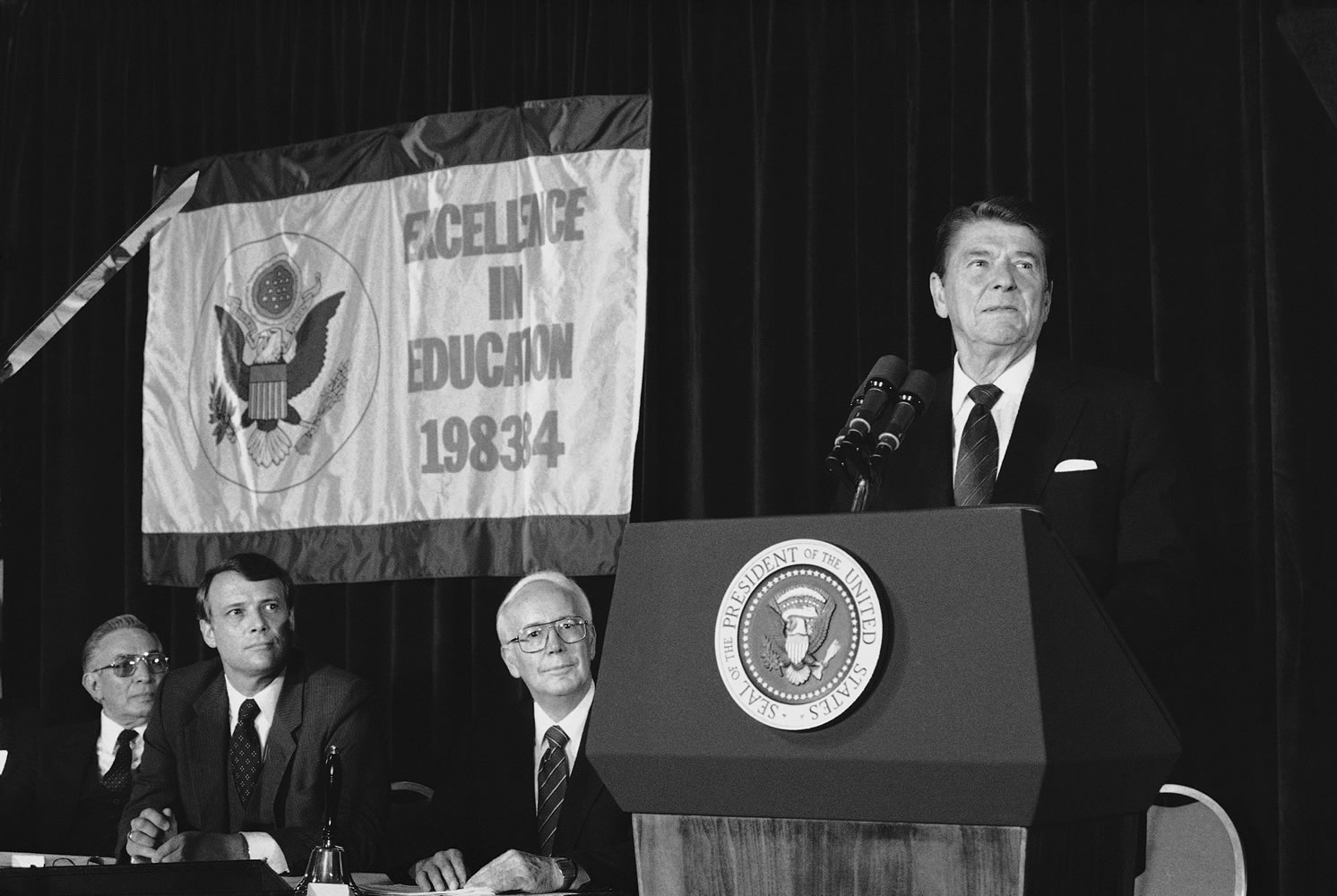WASHINGTON — U.S. students are falling behind their international rivals. Young people aren’t adept at new technology. America’s economy will suffer if schools don’t step up their game.
“A Nation at Risk,” the report issued 30 years ago this week by President Ronald Reagan’s Education Department, was meant as a wake-up call for the country. It spelled out where the United States was coming up short in education and what steps could be taken to avert a crisis.
But its warnings still reverberate today, with 1 in 4 Americans failing to earn a high school degree on time and the U.S. lagging other countries in the percentage of young people who complete college.
“A Nation at Risk” spooked the public, urged an overhaul of how and what children are taught and sparked the school reform movement in the country. Current reform advocates such Michelle Rhee, the former District of Columbia schools chancellor, and former Florida Gov. Jeb Bush can trace their work back to the report.
“We opened the genie from the bottle and said, ‘You aren’t doing so well,'” said Xavier University of Louisiana President Norman C. Francis, a member of the commission that produced the dire warning. “For us, we felt good about the fact that we wrote something that needed to be said. We had the research. And we hoped we would have a greater measure of return.”
At times, President Barack Obama has seemed to take his cues from the report.
“What is at stake is nothing less than the American dream,” he said in 2009, calling for an education overhaul to keep pace with other counties.
“Despite resources that are unmatched anywhere in the world, we have let our grades slip, our schools crumble, our teacher quality fall short and other nations outpace us,” he said.
Russ Whitehurst, director of the Brown Center on Education Policy at the nonpartisan Brookings Institution and a former senior Education Department official, calls the report prescient. “The themes that it stressed — the increasing role of technology, globalization — is now the everyday stuff of education. But it wasn’t at the time.”
“I can’t think of anything that painted with quite as broad a stroke as ‘A Nation at Risk,'” he added.
Its impact, however, was not as broad.
The commissioners urged extending the school year from 180 days to up to 220 days. The report also suggested an 11-month contract for teachers so they could spend their summers preparing for the next year. Neither recommendation has been put into widespread use.
The commissioners also said teacher salaries should be increased to be “professionally competitive.” Again, there hasn’t been near the movement commissioners sought. In today’s dollars, the average teacher earned $46,700 in 1983 and $54,900 in 2010, according to the Education Department.
But some of the commission’s other recommendations were put into practice, including a more rigorous curriculum. For instance, students graduating in 1982 had an average of 2.2 science credits on their transcripts. In 2009, that average number rose to 3.5 credits.
And the class of 1982 left high school with 2.6 math credits, compared with the 2009 graduates’ 3.9 credits, according to Education Department data.
“The results are mixed,” said William Bennett, who served as Reagan’s second-term education secretary. “We have progress being paid to the right things: content, accountability. … It was right about how we needed to beef up courses and how we needed to be stronger.”
But when Bennett compares U.S. results with those of other nations, there’s no reason to celebrate.
“If you look at those numbers, you get the story for 30 years,” he said. “If there’s a bottom line, it’s that we’re spending twice as much money on education as we did in ’83 and the results haven’t changed all that much.”



